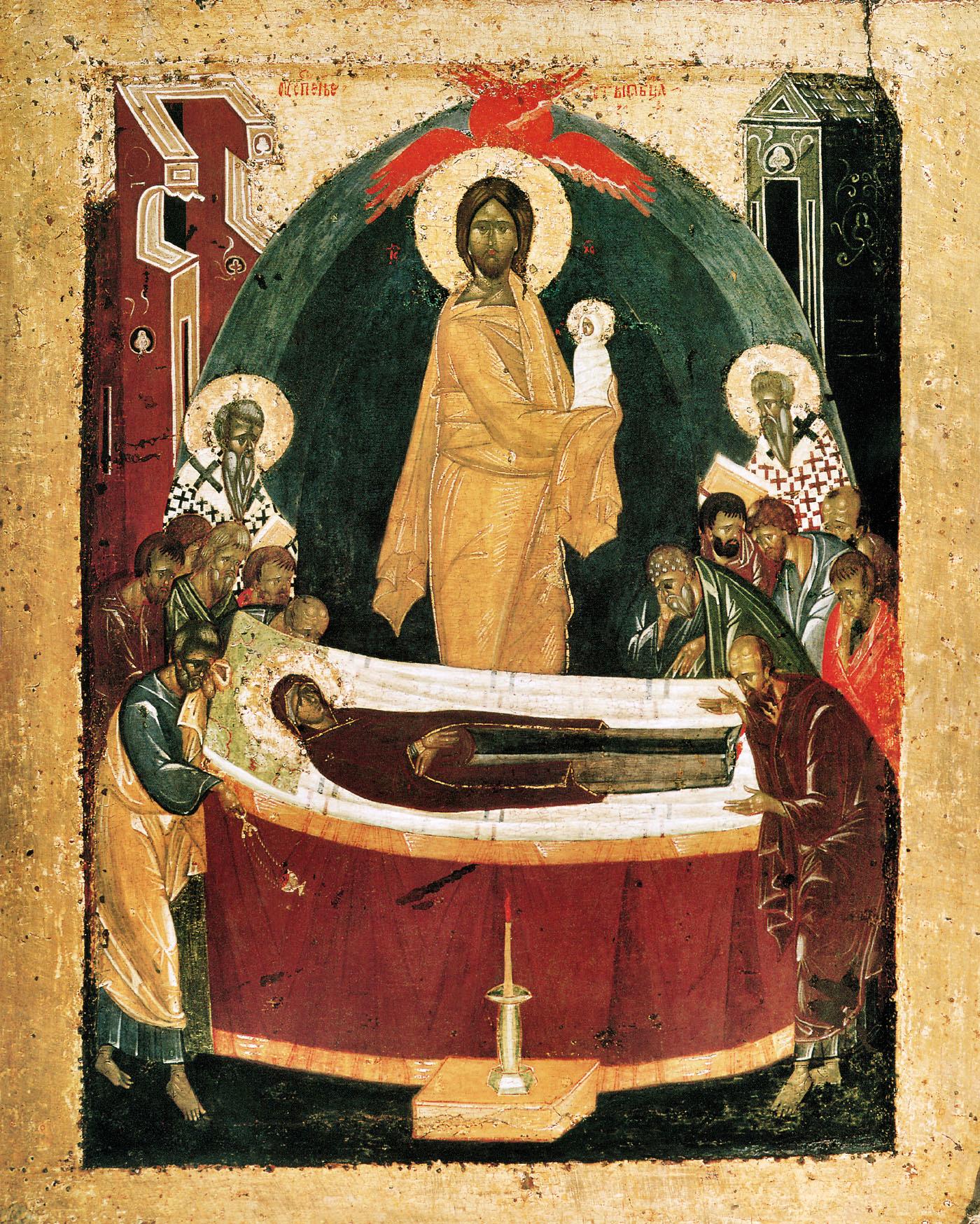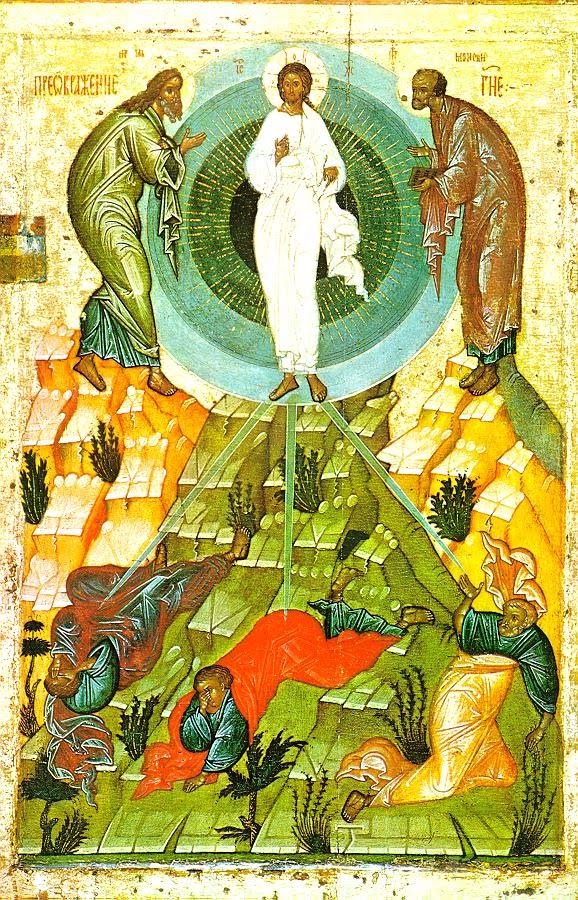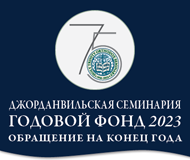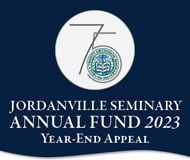News
-

15/28 August – Dormition of our Most Holy Glorious Lady Theotokos and Ever-Virgin Mary
27 August 2011
After the Ascension of the Lord, the Mother of God was in the care of St. John the Theologian, and in his absence, she lived in the house of his parents near the Mount of Olives. She was a consolation and edification for the apostles and all the faithful. Talking with them, the Mother of God related the wonderful events of the Annunciation, seedless conception and Her giving birth without corruption to Christ, His infancy and entire life on earth. Like the apostles, She planted and confirmed the Christian Church by Her presence, word and prayers. The reverence of the apostles toward the Most Holy Virgin was extraordinary. After receiving the Holy Spirit on the significant day of Pentecost, they continued in Jerusalem for about ten years, ministering toward the salvation of the jews and wishing more often to see and hear from Her Divine words. Many from among the newly illumined by the faith came even from distant lands into Jerusalem in order to see and hear the Most Pure Theotokos.
During Herod’s persecution of the young Church of Christ (Acts 12:1-3), the Most Holy Virgin Mary, together with the apostles John the Theologian, in the year 43, went to Ephesus, where it was his lot to preach the Gospel. She also visited St. Lazarus the Four-days-dead on Cyprus, he was the bishop there, she went to Mount Athos, of which, according to St. Stephen of the Holy Mountain, the Mother of God said prophetically: “This place shall be my lot, given Me by My Son and My God. I shall be the Protectress of this place and the Intercessor for it.”
The circumstances of the falling asleep of the Mother of God are known in the Orthodox Church from apostolic times. In the first century, hieromartyr Dionysius the Areopagite wrote about Her Dormition. In the second century, narrative about the bodily translation of the Most Holy Virgin Mary to Heaven is found in the works of Meliton, bishop of Sardis. In the fourth century, St. Epiphanius of Cyprus points to the tradition regarding the Dormition of the Mother of God. In the fifth century, St. Juvenal, Patriarch of Jerusalem, said to the holy right-believing greek queen Pulcheria: “Even though Sacred Scriptures do not contain information about the circumstances regarding Her falling asleep, we know of them from the most ancient and most sure tradition.” This tradition is carefully collected and presented in the church history of Nicephorus Callistus in the fourteenth century.
Evidence remains that at the end of the seventh century there existed a church over the underground church of the Dormition of the Most Holy Theotokos; from this church’s bell tower one could see the dome of the church of the Resurrection of the Lord. There are no traces of this church now. However, despite the destruction and changes, the general primary crosswise foundation of the church remains.
“It is necessary for that, which was formed of earth, and was going to return to earth, and then would ascend to heaven, having received in the earth the most pure life through the leaving of the flesh in it; it is necessary for the body through death, as though through the fire in the furnace, just like gold, having been cleansed of all darkness and the crude heaviness of corruption, to rise from the tomb incorrupt, pure and illumined with the light of immortality.” – These words belong to St. John of Damascus. On the feast of Dormition in the year 754, the saint delivered a homily in Jerusalem – over the Tomb of the Most Pure One, Who asked to be buried in Gethsemane, at the foot of the mount of Olives, not far from the place, where the last night in the earthly life of Her Son was spent.
According to the testimony of the byzantine church historian George Kedrin, the falling asleep of the Theotokos was preceded by a manner of second Annunciation: “the Most Holy Virgin, once, was praying on Her knees at the very place, where Her Divine Son once prayed about the cup, when, suddenly, Archangel Gabriel stood before Her, and giving Her the sign of victory over bodily death – a branch from the date palm in paradise – he announced to Her that She would fall asleep in three days.” George Kedrin writes that the apostle John the Theologian carried this branch before the bier of the Theotokos after Her Dormition.
The circumstances of the falling asleep of the Theotokos, as well as all related to Her, are set forth in the work of some Leucius, a younger contemporary of the apostles. This work is very ancient and is dated in the beginning of the second century of christian era; its content fully agrees with the orthodox service for Dormition. According to Leucius, the adopted son of the Most Pure apostle John and the first bishop of Jerusalem Jacob the brother of the Lord informed all the faithful about the coming Dormition of the Mother of God. Apostles, in wondrous manner, were brought from various regions into the Holy City of Jerusalem. Only apostle Thomas, by a special providence of God, was unable to bid farewell to the Mother of the Savior. Further, it is noted that the Theotokos was buried at the Gethsemane cemetery, near the valley of Jehosophat, near the graves of her parents: Ss. Joachim and Anna, in one of the three tombs in that section of the cemetery, the one closest to the east.
In 1972, archeologist and famous specialist in early christians monuments, franciscan Bellarmino Bagatti had the honor of confirming the absolute exactness of the topographical data of Leucius. A flood helped the discovery: in 1972 the underground church of the Dormition of the Mother of God was flooded more than usual. “Misfortunes often happen to be providential, – is written in the report of the monk professor. – In the past, when our Sister the Water finished its veneration at the holy place, the custodians, armenians and greeks, changed the vestments in the church and as soon as the walls were somewhat dry, painted them anew. However, this time it was decided to do a more thorough job. When the plaster fell, the stone wall of the burial chamber of the Virgin Mary stood before our eyes.”
Forty eight steps of the wide stone stairway, literally overflowing with a hot river of wax, made from the thousands of melted candles, on the days of Dormition, lead into the underground church. In the fifth century, over the tomb of the Ever-Virgin cut in stone, there stood a richly decorated byzantine style church, and there were only twenty steps, but since then, or more precisely from the time of the crusaders, the ground level changed and the Dormition church, one might say, went deeper into the rocky soil.
Three days before Dormition the orthodox clergy of Jerusalem transfers a silver Shroud into Gethsemane – in memory of the sad day, when the apostles carried the Most Pure body of the Theotokos from the house of apostle John on mount Sion. By the way, in a calendar, compiled before the time of the crusades in Jerusalem, there is the feast of “translation of the Body of Mary from mount Sion to Gethsemane.” On the 14th of August according to Church calendar, one day before the feast, Patriarch of Jerusalem and all the brotherhood of the Holy Tomb walk along the way of the Cross in the direction of the gates of Saint Stephen (they are also known as the Lion’s gates, and the Gates of Lady Mary). A small distance from them, beyond the Kedron valley, is situated the church of Dormition – the tomb of the Most Holy Theotokos.
…On the third day after the Dormition of the Theotokos the unconsolable apostle Thomas came to Gethsemane, and weeping, he bowed over the cave of the tomb. Having compassion for his sorrow, the other disciples agreed to move away the stone, which covered the entry into the tomb, however, the Most Pure Body was no longer there, for the Most Holy Theotokos “as though with sleep slept for a short while in death, she soon as from sleep, woke from it, and having shaken off the deadness of the tomb, as sleep from eyes, she saw the immortal life and glory in the light of the Countenance of the Lord” (from the canon of Dormition).
-

August 6/19 – Holy Transfiguration of our Lord God and Savior Jesus Christ… Second (“Apple”) feast of the Savior
19 August 2011
In the Transfiguration of the Lord the mystical Divine essence of the One, Who was still called Nazarene, suddenly became visible to the three disciples chosen by Himself, or, in the language of the Church, this Essence proceeded through the human nature of Jesus. Apostles Peter, James and John saw the Son, Whose image shown “like the sun.” At the same time, the Apostles physically experienced upon themselves “the grace of the Holy Spirit, coming, like a noetic light, brining joy” (according to the words of St. Symeon the New Theologian). And when Peter, for a moment being permeated by this Light, cried out: “Lord! It is good for us to be here,” the voice of the Heavenly Father: “This is My beloved Son, in Whom I am well pleased; hear ye Him” (Matthew 17:4) became audible for him, and for James and John.
The author of the Third Gospel, holy apostle Luke, in his description of the Transfiguration offers three most important details: the Lord’s “appearance of countenance” changed during the time of prayer; Prophets Moses and Elias spoke with Jesus “about His departure, which He had to accomplish in Jerusalem” (Luke 9:31); the disciples “were heavy with sleep” and that in some way foretold the unconquerable black sleepiness, that would soon come upon the apostles in the garden of Gethsemane at night.
Transfiguration of the Lord happened on the eve of the Old Testament feast of tabernacles, which is called “the feast of our joy,” “the feast of light” and other. During these days, according to ancient custom, the faithful had to dwell in houses made of branches – “tabernacles,” – which in part signified the corruptibility, instability, and temporary nature of all things earthly. However, at the same time the feast of Tabernacles is also the end of the difficult labor of cultivating the land for months, it is the gathering of the harvest.
“…if Thou willest, let us make three tabernacles here: one for Thee, one for Moses, and one for Elias, – Peter offered the Lord, “for he did not know what to say; for they were sore afraid” (Mark 9:6). According to Bishop Cassian (Bezobrazov), Peter thus tried to hold Transfiguration: for if Christ, the Son of the Living God, is near, and Moses, and Elias, who embody the Law of God and the Prophets, then, it must be that the Kingdom of God “is at the doors”: it either came already, or will come at any moment, and one would not have to go into cruel stone Jerusalem, above which hangs the red hot haze, and one could stay here, in the green, blossoming Galilee, on mount Tabor…
The Church tradition, rising at least to the third century A.D., points to mount Tabor, in the southern part of Galilee, as to the place of the Transfiguration of the Lord.
“Mount Tabor is earthly heaven, exultation of the soul and satiation of the eyes of the orthodox: for some divine grace is present, overshadowing the mountain, which is what inspires the spiritual joy,” – sometime wrote the greek from Crete, author of pilgrim’s notes, John Fokas; his visitation of the Holy Places of Palestine happened in 1187. It is difficult to say what exactly he saw on mount Tabor: some sources state that in 1181 the armies of calif Saladin destroyed the local monasteries and churches, killed those, who lived there, and upon the ruins they built a fortress to deflect the attacks of the crusaders.
The glorious “igumen of the Russian land” Daniel mentions the churches on Tabor in his “Pilgrimage”: “There is a place at the very top of the mountain, as though a stone hill, small, with a sharp top, upon that place Christ our God was Transfigured; there are good churches built there, one in honor of Transfiguration, and the other in honor of the holy prophets Moses and Elias.”
All of this, later on, disappeared at the hands of the destroyers, and only in the XIX century, greek orthodox church was built on Tabor, where one can see the remains of the buildings from the times of the holy Empress Helena, mother of holy Equal-to-the-apostles Emperor Constantine. The guide for the Russsian pilgrims, published in 1894 in Odessa, narrates: “Pilgrims take almost an hour in order to climb to the sacred top of the mountain of Transfiguration. At the walls of the greek monastery the caravan is greeted by the peeling of the bells and the pilgrims go straight into the church… Having venerated at the holy place, the pilgrims situate themselves within the walls of the monastery, however each one is capable. The entire building of the monastery, even the church is wide open to receive the distant travelers. In the evening, our Russian hieromonks, along with the entire brethren of Tabor, clergy from among the pilgrims, and in the presence of the Metropolitan [of Nazareth], serve the all-night vigil, and then, early in the morning, liturgy in Church Slavonic.”
The shining of the uncreated light of Tabor right next to sinful people, who were sleeping, contains within itself a promise: “it is impossible for Him not to enlighten those, who in a worthy manner participate in the Divine shining of His Body within us,” – writes St. Gregory Palamas. It was in this very manner that the blessed Batushka Seraphim of Sarov made his N.A. Motovilov a seer of the mystery and fellow participant of being in the Light of Transfiguration. “Imagine to yourself, in the middle of the sun, in the very shining brightness of its noon rays, the face of a man, who is talking to you. You see the moving of his lips, the changing expression of his eyes, hear his voice, yet you do not see yourself, nor his figure, but only the blinding light, stretching far, and illumining with its bight shining the snow, covering the meadow, and the pieces of snow, pouring from above upon me and upon the Great Elder”, – said Motovilov about what took place.
In continuation of the Old Testament custom, the fruits of the earth are blessed on Transfiguration, the heads of wheat and grapes, “for from it there comes wine, acceptable for the offering of the bloodless sacrifice”.






